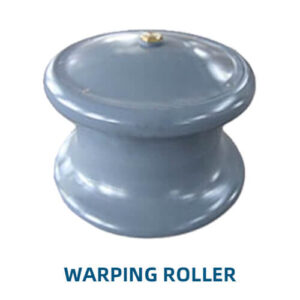Key Components of a Marine Winch:
- Drum:
- The central cylindrical part around which the rope, cable, or wire is wound. The drum’s size and design depend on the type of winch and the required capacity.
- Motor:
- Electric Motor: Commonly used on smaller vessels, powered by the vessel’s electrical system, offering precision and ease of control.
- Hydraulic Motor: Used on larger vessels where more power is required. These motors are driven by the ship’s hydraulic system and provide greater force and durability.
- Manual Operation: Some winches, particularly on smaller boats, may be operated manually by a crank or lever.
- Brake System:
- The brake controls the winch drum, allowing it to hold the load securely in place when the motor is not running. This system is crucial for safety, especially when handling heavy loads or operating in rough seas.
- Clutch:
- The clutch allows the winch drum to be engaged or disengaged from the motor, enabling the operator to control when the drum should turn. This feature is useful when switching between manual and powered operation or when stopping the winch without cutting power.
- Gearbox:
- The gearbox connects the motor to the drum and adjusts the speed and torque, allowing the winch to operate efficiently under varying load conditions. Different gear ratios are used depending on the specific requirements of the task.
- Controls:
- Winches are operated via control panels or handheld remote controls, which allow the operator to start, stop, and adjust the speed of the winch. Some advanced winches also feature automated control systems for precise operations.
Types of Marine Winches:
- Anchor Winch:
- Designed specifically for raising and lowering the anchor. Anchor winches must be powerful enough to handle the weight of the anchor and the resistance of the seabed, especially in deep water or when strong currents are present.
- Mooring Winch:
- Used to secure a vessel to a dock or another vessel. Mooring winches typically handle ropes or wires and are designed to manage the forces involved in keeping the vessel stationary despite the influence of wind, current, and tides.
- Towing Winch:
- These winches are used to tow other vessels or objects. They are designed to handle heavy loads and often feature multiple drums to manage towing lines effectively.
- Capstan Winch:
- A vertical winch, often used for light-duty tasks such as handling lines or ropes for docking. Capstan winches are commonly found on smaller vessels or as supplementary equipment on larger ships.
- Windlass:
- A specific type of winch used to handle anchor chains. Windlasses are often equipped with a gypsy (wildcat) that is designed to engage the chain links, allowing the anchor to be raised or lowered smoothly.
- Cargo Winch:
- Used for loading and unloading cargo on ships. Cargo winches need to be robust and reliable, capable of lifting heavy loads safely and efficiently.
Applications of Marine Winches:
- Anchoring: Marine winches are critical in anchoring operations, providing the force needed to deploy or retrieve an anchor and its chain.
- Mooring: Winches secure the vessel to a dock or buoy, ensuring stability and safety while the vessel is stationary.
- Towing: Tugboats and other vessels use winches to tow ships, barges, or equipment. The winch must be capable of withstanding significant loads and maintaining control over the towing operation.
- Cargo Handling: On cargo ships, winches are used to lift and move heavy loads, such as containers, machinery, or other goods, onto and off the vessel.
- Rescue Operations: Marine winches can also be used in rescue operations, such as lifting people or equipment from the water.
Advantages of Marine Winches:
- Efficiency: Winches allow for the quick and controlled movement of heavy loads, reducing the time and effort required for various tasks on board.
- Safety: By providing precise control over ropes, wires, and cables, winches help prevent accidents and ensure that operations are conducted safely.
- Versatility: Marine winches are available in a wide range of designs and sizes, making them suitable for various applications, from anchoring and mooring to towing and cargo handling.
Considerations for Choosing a Marine Winch:
- Load Capacity: The winch must be capable of handling the maximum expected load, with a safety margin to account for dynamic forces such as waves or wind.
- Power Source: Depending on the vessel’s setup, choose between electric, hydraulic, or manual winches, considering power availability and the required operational force.
- Environmental Conditions: The winch should be designed to withstand the harsh marine environment, including exposure to saltwater, extreme temperatures, and mechanical stress.
- Maintenance: Consider the ease of maintenance and the availability of spare parts, especially for winches that will be used in remote locations or on long voyages.
Marine winches are essential tools in the maritime industry, providing the muscle needed to manage heavy loads and complex operations on the water. Proper selection, operation, and maintenance of winches ensure safe and efficient maritime activities, whether for leisure, commerce, or industrial purposes.






